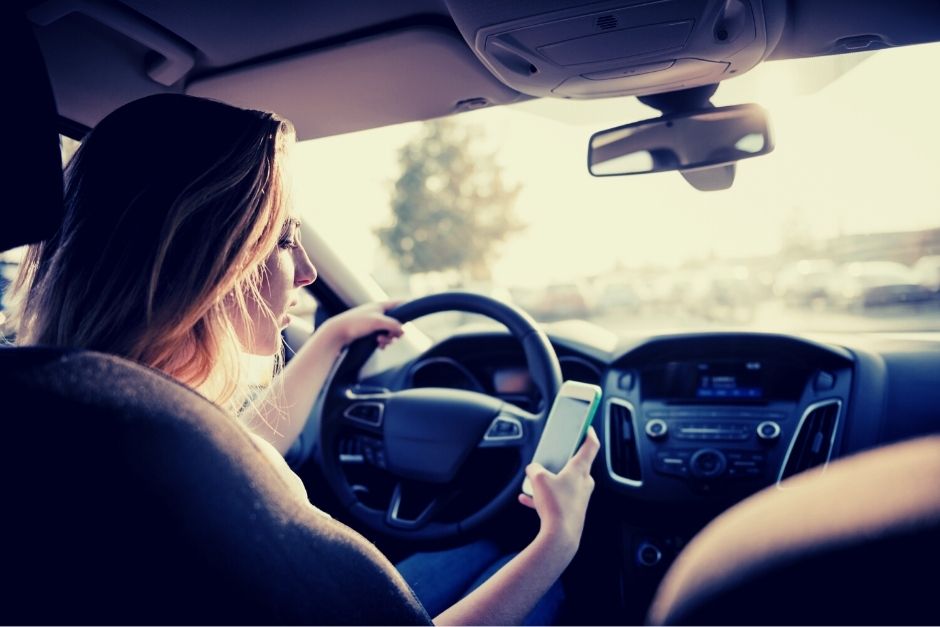When your mind, eyes and attention wander, driving can quickly turn dangerous. Traffic data shows at least eight people are killed every day in distracted driving-related crashes, according to the National Safety Council. And, the National Highway Traffic Safety Administration (NHTSA) estimates that nearly 3,500 people are killed annually in distracted driving incidents.
Despite the alarming numbers, many of us have bad habits when it comes to keeping our focus on the road. For example, about 660,000 Americans admit to habitually using their cell phones while driving, which is a leading cause of distracted driving incidents.
What is distracted driving?
Distracted driving comes in four types: visual, auditory, manual, and cognitive. Eating, drinking, listening to loud music, pets, and even kids can cause us to lose focus. Some basic recommendations for drivers include:
- First, and most obviously: Don’t talk or text while driving! According to traffic experts, texting is the most dangerous driving activity. According to the National Highway and Traffic Safety Administration (NHTSA), sending or reading a text message takes your eyes off the road for about 5 seconds, long enough to cover a football field while driving at 55 mph. According to the U.S. Department of Transportation (DOT), text messaging increases the risk of crashes or near-crashes by 23 times.
But texting is not the only culprit in distracted driving incidents. Talking on the phone, even on a hands-free device, can impair the driver the same way being intoxicated would. Cell phone users are 5.36 times more likely to get into an accident than undistracted drivers, the research shows.
- Don’t multitask while driving. Drivers should only do one thing while on the road: Drive! So don’t do paperwork or put on your makeup when you are rushing to get to school or work.
- Don’t eat or drink while driving. Either eat before or after a trip, or pull over.
- Don’t get distracted by technology. A big selling point for newer cars is all the bells and whistles, many of which are marketed as safety-promoting devices (voice-activated systems or handless devices). But the more complicated these are, the more attention they take from the road.
- Make all adjustments before hitting the road. Drivers should set GPS, climate control, and sound systems, as well as adjust mirrors and seats, before setting out on the road.
- Avoid the clutter. A messy car, with items rolling and moving all over the place, can be a distraction.
- Keep your eyes on the road. Drivers should always keep their eyes on the road and avoid looking at things like cool-looking buildings or eye-catching billboards. It’s recommended that drivers move their eyes every two seconds and scan mirrors every five to eight seconds.
- Never Drive Drowsy. Drowsy driving is a factor in more than 100,000 crashes each year, according to NHTSA. Drowsy drivers should immediately pull off the road and find a safe place to rest.
One tool recommended by NSC to avoid bad habits is to take the Driving Distraction-Free Pledge:
- I will make our roads safer for everyone by avoiding all forms of distracted driving.
- I will speak up when others are distracted to protect myself and all other road users.
In April, we encourage you to commit to the pledge yourself and make sure your teen drivers take it for the sake of everyone’s safety.

